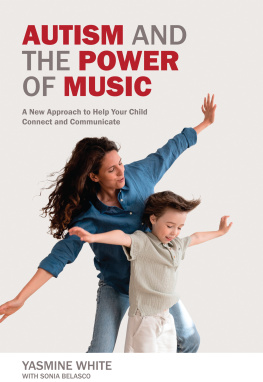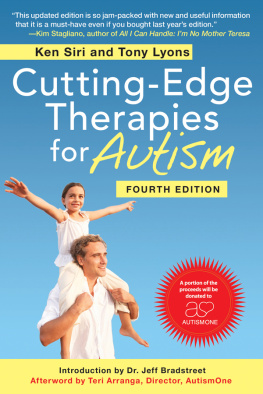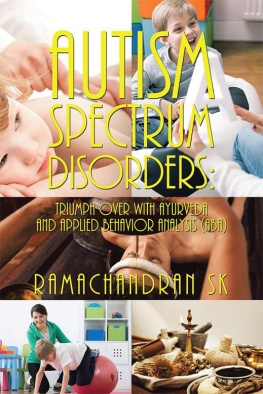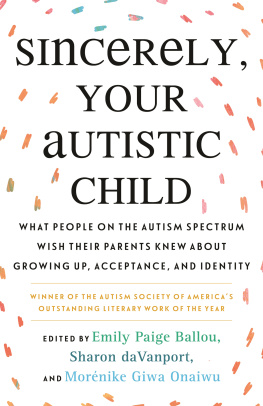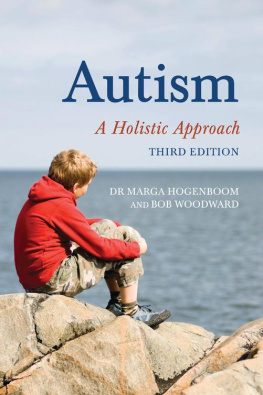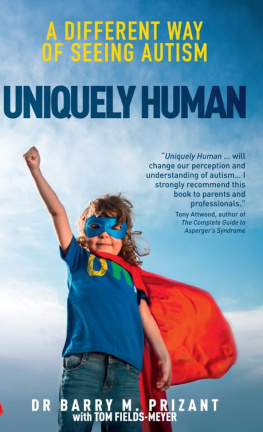AUTISM AND THE POWER OF MUSIC
A New Approach to Help Your Child Help Themselves
All marketing and publishing rights guaranteed to and reserved by:
(800) 489-0727
(817) 277-0727
(817) 277-2270 (fax)
E-mail:
www.fhautism.com
2021 Yasmine White
All rights reserved.
Printed in the USA.
No part of this product may be reproduced in any manner whatsoever without written permission of Future Horizons, Inc., except in the case of brief quotations embodied in reviews or unless noted within the book.
ISBN: 9781949177725
eBook Designed by Acepub
Dedication
To little Katie whose light shined as
long as she was given to shine.
About the Authors
Yasmine White, MT-BC
Yasmine White has been a board-certified music therapist for nearly three decades working with children, teens and adults who are neurodivergent and/or have a neurodevelopmental condition. As the CEO and founder of Voices Together, she developed the VOICSS (Vocal Interactive Communications and Social Strategies) model as a non-directive intervention. She is an author and co-author of peer-reviewed articles published in academic journals and white papers in national publications. She has enjoyed being a frequent guest on radio and television programs and presenter on her proprietary model at regional, national and international conferences.
She has two grown sons and currently lives in Chapel Hill, North Carolina with her husband Jim.
Voices Together and the VOICSS Model
Many of the techniques, ideas and the general approach in this book are based on the VOICSS model developed by Yasmine White beginning in 2007 within the non-profit organization Voices Together. The model has been deemed a best practice in the field by educators and administrators who have seen it in action and studied its impact on students. Having built Voices Together from a small nonprofit serving eight people to an organization serving thousands of people across North Carolina, White is moving the organization forward to deliver a technology-enabled training platform for reaching anyone anywhere who may benefit from this model.
The VOICSS model uses structured music-based interactions to prompt communication and social responses and connections. In each session, the VOICSS model follows a pattern of brainstorming group responses, choosing a peer leader, singing reciprocal songs, listening and responding, and then reinforcing client responses. The non-directive approach,The 50/50 method is based on humanism. This process helps clients feel heard and validated, and helps them improve in goal areas such as self-awareness, self-direction, self-advocacy, social communication, listening skills, and, ultimately, independence.
The mission of Voices Together is to empower individuals who are neurodivergent and/or have a neurodevelopmental condition to transform their own lives.
Learn more at: www.voicestogether.org
Sonia Belasco
Sonia Belasco has spent much of her professional life working with young people as a mentor, tutor, and therapist. She holds an M.S.W. from Bryn Mawr Graduate School of Social Work and an M.F.A. in Writing from California College of the Arts, and loves fusing these two fields by generating accessible content themed around creativity, social-emotional learning, and therapy.
Endorsements
This book is an eye-opening experience. It oers parents new insights and tools to learn with and from their child and adult.
Lori Ireland
Chair of the Board of Directors, Autism Society of America
This remarkable book oers a compelling therapeutic approach that harnesses music as a way to promote communication and social skills. Backed by science, the VOICSS model will be useful for teachers, care-givers, and clinicians who seek to help people on the autism spectrum reach their full potential. Written in a way that is both compassionate and practical, this book is highly recommended!
Geraldine Dawson, PhD
William Cleland Distinguished Professor of Psychiatry Director, Duke Center for Autism and Brain Development Duke University
In the book Autism and The Power of Music , Yasmine White shares her decades of experience as a Music Therapist with practical and creative strategies to promote active engagement and trusting relationships with autistic people of all ages. As a clinician, researcher and performing musician, I found her innovative, evidence-based VOICSS model to resonate beautifully with our Uniquely Human philosophy and SCERTS educational model. Yasmines emphasis on social communication, emotional regulation, and supportive relationships embodies the most eective, cutting-edge approaches for supporting autistic individuals. Autism and The Power of Music is a much-needed resource for parents to connect with their children through music and will also be embraced by educators and clinicians who wish to infuse joyful learning experiences in their work.
Barry M. Prizant, CCC-SLP
Brown University
Author, Uniquely Human: A Dierent Way of Seeing Autism and The SCERTS Model manuals
Autism and the Power of Music will show you how something as simple as tapping on an improvised drum can completely change how you connect and communicate with your child on the autism spectrum. This book oers a multitude of ways to apply music in everyday situations. A rhyme, a simple melody, or a basic rhythm can open the door for both parent and child to grow and connect in new ways. It can be a game changer, especially when more traditional approaches have not been successful. This book is a wonderful starting point for putting the VOICSS model to work in your home.
Jonathan Chase
Author, Autism/Autistic Advocate
Autism and the Power of Music is a unique way and concept of building generalization skills in individuals with autism and other developmental disabilities. I applaud the eorts of the authors in exploring the science behind their strategies and giving practitioners a solid method to implement. I would highly recommend this book to families, teachers, speech and language therapists, and all those who work with people with autism and/or other developmental disabilities.
James Ball, Ed.D., BCBA-D
President/CEO, JB Autism Consulting
Honorary Board Member, National Board of Directors, Autism Society
Past Two Time/Interagency Autism Coordinating Committee/ Community Member
Authors Note
Languaging in the world of autism is in transition. I have chosen to use person-first language that identifies the individual as a person first. In other words, I use the phrase person with autism or person who has autism rather than autistic person or autistic child. I am aware that there are many individuals on the spectrum who want to be identified as autistic, making autism that persons defining quality, and by choosing person-first languaging, I am not arguing that this is preferable. As we move through this transition, please know that I respect and am listening to all voices.
Following the lead of Barry Prizant in his book Uniquely Human , I use the term nonspeaking for individuals who do not communicate by speaking. While the term nonverbal is often used to describe these individuals, they are verbal, since they often communicate using sign language or adaptive devices.
When you see a box like this, it is a tool section. These sections will give you more hands-on practical ways to try some of these motivating and effective tools and techniques.
Next page
